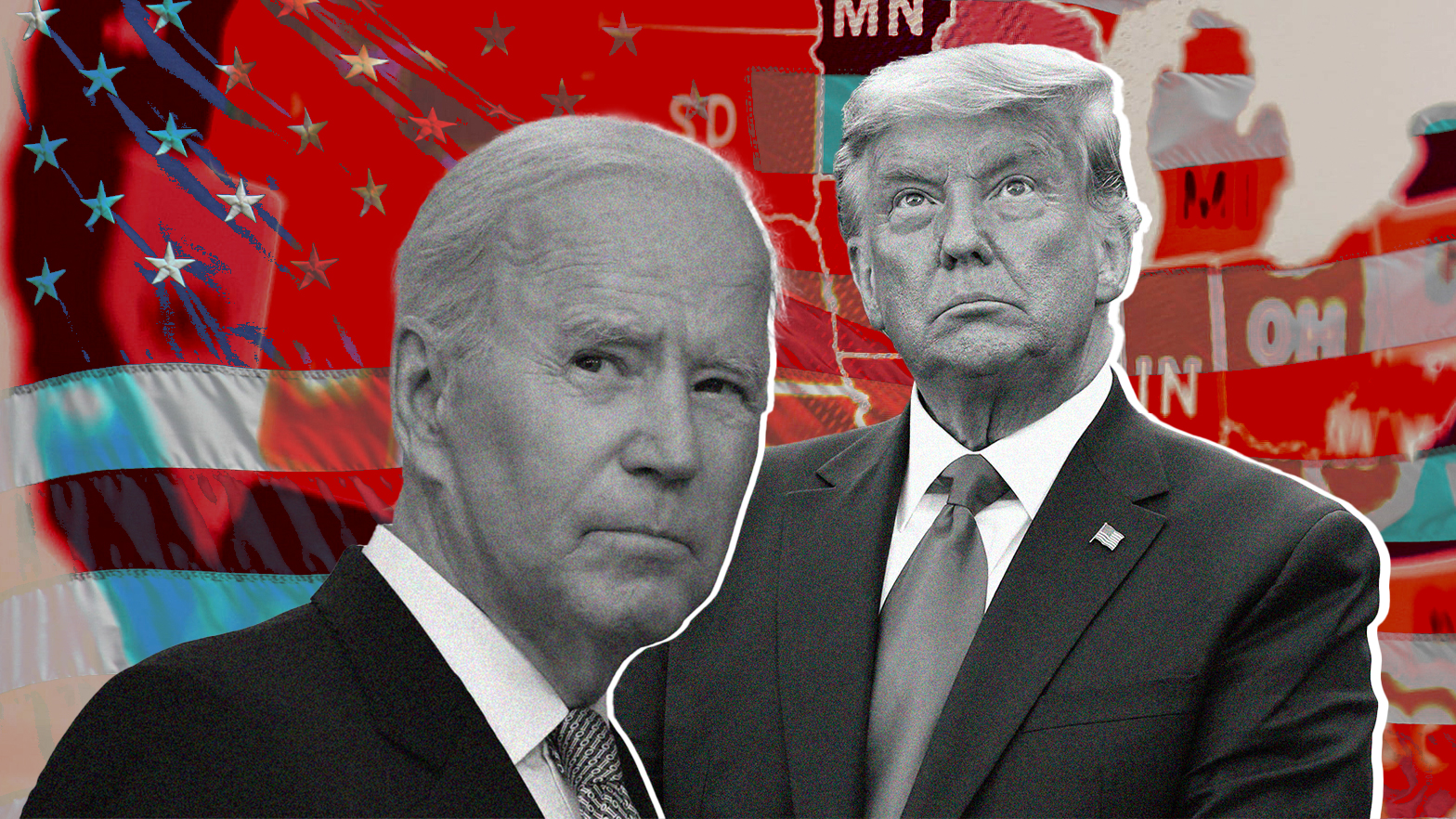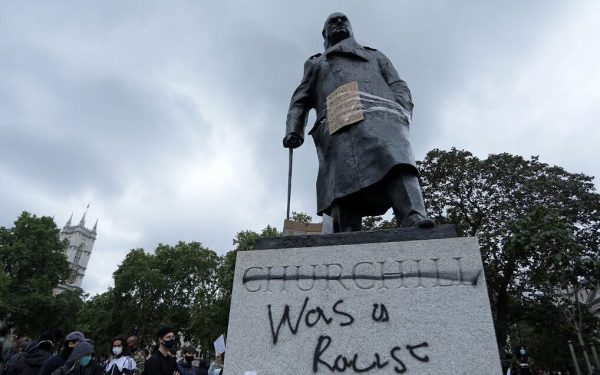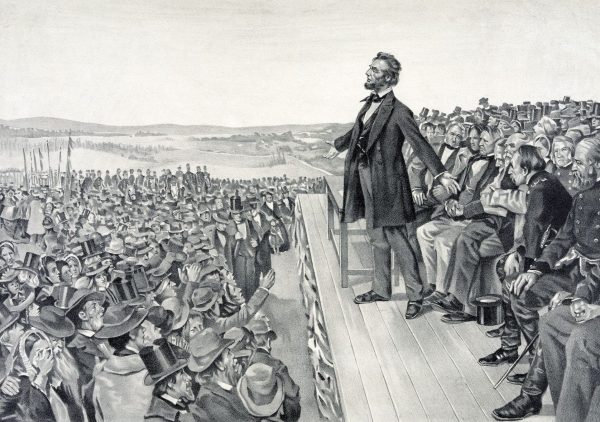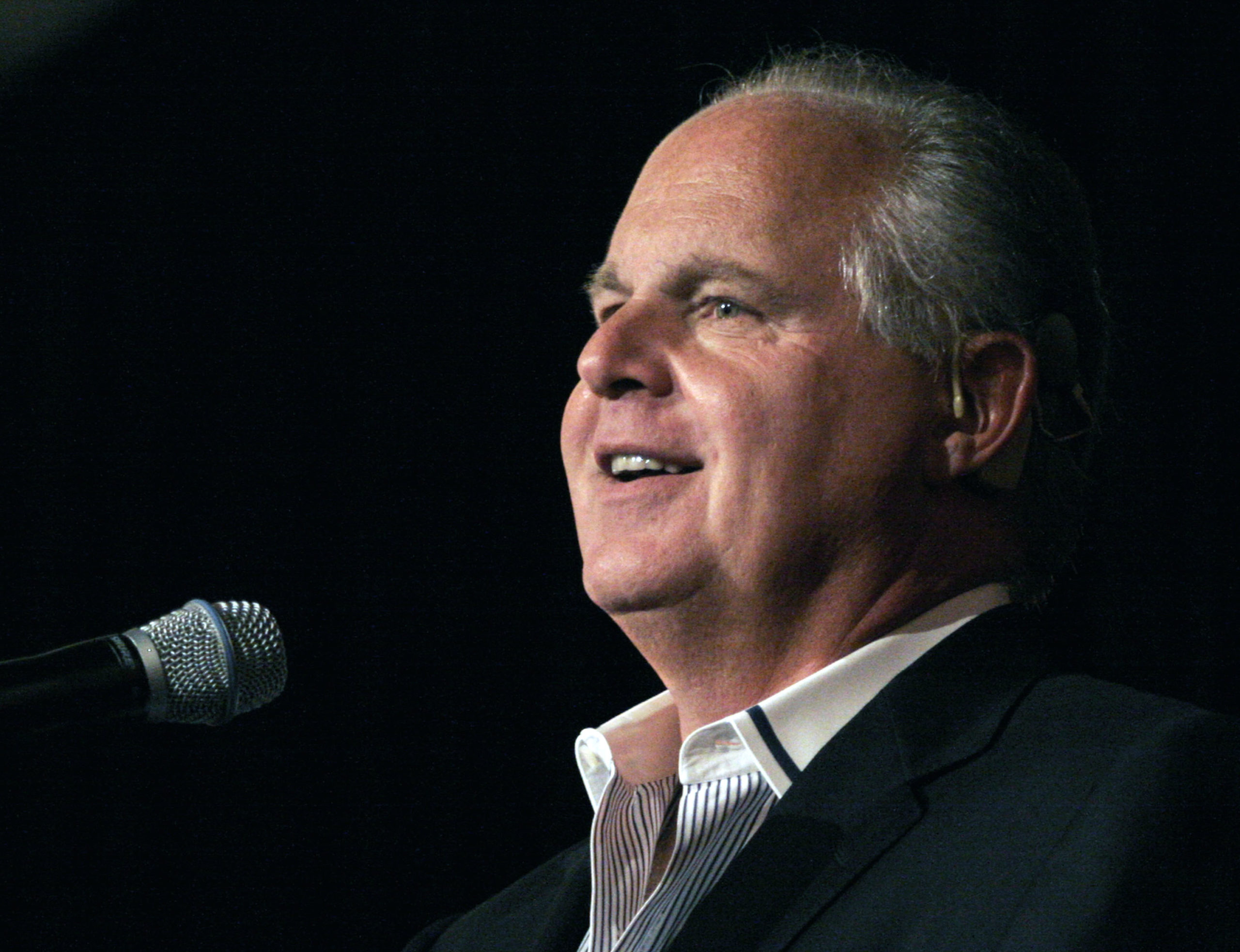Election 2020 is a choice between the America of the Founding and an America beset with guilt.
Class of ‘24

Pocketbook concerns override racial resentment in the current political climate.
Most political coverage in America revolves around personalities, stratagems, and the cultural issues that appeal to the activist class in both parties. Yet the real determinant in 2024 will not be abortion, “systemic racism,” gender fluidity, or climate change, but deepening class divides. Once you analyze voters by class, and how they make their livings, racial categories—so critical among progressives today—recede in relevance.
Politicians in both parties pay lip service to working- and middle-class interests, but generally ignore their major concerns. In poll after poll most voters identify their main concerns as inflation, lack of economic opportunity, health care, and issues such as crime and immigration that directly affect their jobs, their earnings, and their families. Relatively few, well under 5 percent, mention such things as the environment, racism, abortion, or even foreign policy, notes Gallup, a finding confirmed in recent Pew surveys.
This process is best seen by comparing education levels. Once a minor factor, educated voters since 2017, particularly with graduate degrees, have tilted toward the Democrats, beating Republicans by almost 30 percentage points. In contrast, those without a college education have gone from 14 percent more Democratic to 14 percent more GOP leaning.
The predominance of class is a key determinant amidst what are perceived as bleak times for working people. Many are simply dropping out; labor participation of men is now lower than in 1940, notes demographer Nicholas Eberstadt, when unemployment was three times higher. One recent poll found that only 34 percent of Americans approve of Bidenomics. By last summer a Reuters/Ipsos poll found that nearly 70 percent of Americans think the economy is worse now than in 2020, when the pandemic started in the U.S.
So why are Democrats, the putative party of the people, so disconnected from their historic base? One reason may be that, for many in their increasingly well-educated pool of support, things are going swimmingly. Pollster Scott Rasmussen has done a deep dive on “the one percent”—urban dwellers with post-graduate degrees and incomes over $150,000. These, by a four-to-one margin, support Joe Biden and his climate policies and progressive agenda. These professionals, particularly women, are increasingly the base of the Democratic Party.
Whether as professionals or the ultra-wealthy, these Democrats may be voting their consciences, but also their class interests. Government, social assistance, and healthcare account for 56 percent of the 2.8 million net new jobs over the past year, notes the Wall Street Journal, and for nearly all employment gains in blue states such as New York and Illinois. Professionals concentrated in government and largely public funded health programs have benefited mightily under Biden. Those who work directly for Washington recently a nice 5 percent raise from their president.
The other side of the Democratic base, wealthier voters, are beneficiaries of the strong stock market. The top ten percent own roughly 60 percent of all stocks, while most others have holdings averaging $40,000. In contrast to real incomes, which have grown barely 1.7 percent since 2020, stock income has burgeoned by nearly 50 percent.
So Paul Krugman is not entirely delusional when he thinks things are pretty good; they are indeed excellent for private jet flying tech oligarchs and tenured Ivy League professors. But the gap between the upper classes and everyone else continues to grow. No surprise then that only 36 percent of voters in a new Wall Street Journal/NORC survey said the American dream still holds true, substantially fewer than the 53 percent who said so in 2012 and 48 percent in 2016 in similar surveys.
This great disconnect between the cognitive elites and the voters is large enough to re-elect Donald Trump. The progressive media will no doubt trace this result to racial animus and even a thirst for fascism, but it may be more instructive to look at class interest. Small businesses tend to be the strongest backers of Donald Trump, with roughly two thirds approval, not because they hate black people or gays but as a reaction to the high taxes and regulatory excess that increasingly imperil smaller firms which lack the resources to accommodate elaborate compliance mechanisms.
Then there are those who work in what my colleague Soledad Ursua calls the “carbon economy.” These labor in material industries—manufacturing and agriculture, and particularly ranching, logistics, and home construction—and their livelihoods are in particular threatened by Biden’s green policies. In Texas the price could be as many as a million generally good-paying jobs. Overall, according to a Chamber of Commerce report, a full national ban on fracking, widely supported by greens, would cost 14 million jobs—far more than the eight million jobs lost in the Great Recession of 2007-2009.
Environmental propagandists, particularly the major media, pretend these workers will be able to shift to “green jobs.” But barely one percent of people losing “dirty jobs,” notes a recent University of Pennsylvania study, find work in a “green” one. Working class voters in particular do not seem inclined to embrace the green agenda of imposing “effective pain”; just one percent of blue collar workers, according to a new Monmouth poll, consider the climate a major concern; average Americans don’t want to spend more than $2.50 a week to combat it.
Perhaps the biggest threat to Biden’s hold on the working class could be his economically unfeasible electric vehicle (EV) mandates. Detroit and its unionized companies face a wall of consumer resistance; Ford is losing $36,000 per EV. As the Big Three struggle to stay competitive in EV and battery production, firms like Tesla and second place Kia/Hyundai are building plants mostly concentrated in lower cost, non-union Sun Belt states.
Unions, a diminishing share of workers concentrated in the Upper Midwest, will likely mostly endorse Biden, but union members, according to a survey of voters in key swing states—including traditional industrial centers like Wisconsin and Michigan—are trending increasingly to the GOP. Overall, according to one recent poll, barely 3 percent of voters in these key swing states consider the climate the most pressing issue; inflation, the economy, crime, and immigration rank far higher. These same trends, notes Gallup, can be seen across the national electorate.
Ultimately, most Americans vote their pocketbooks more than their skin color. Despite being the most ostentatiously multikulti administration in history, Biden’s support among non-whites, according to the New York Times, has dropped significantly, even among his strongest base, the African American community. The gap among black voters favoring Democrats over Republicans has shrunk, according to Gallup, from almost 80 percentage points to just 47 points now. The border crisis is one factor undermining his support among African Americans, including some black Democrats. In big cities like New York and Chicago, migrants, attracted by “sanctuary cities” which assure them soft treatment, are seen as competing for scarce jobs and resources.
Of course, Biden or any Democrat can count on winning the black vote, in part because many working- and middle-class blacks—far more than other populations—work for the government, making them susceptible to Democratic largesse. But there is serious erosion among working-class blacks, particularly men.
As in the rest of the population, black college graduates tend to be more supportive of the Democrats, but many other African Americans work in the carbon economy—roughly one-fourth of UAW workers are black—or own small businesses. Overall, nearly 40 percent of African Americans disapprove of Biden’s performance, a shockingly high number.
Even in the inner cities, the surge of crime, homelessness, and general disorder is leading some, such as in Oakland, to turn on their progressive “benefactors.” Oakland’s progressive district attorney and its socialist-identifying mayor are both facing a recall.
But the most critical shift is occurring among Hispanics, now the country’s largest racial minority. Ironically, Biden’s weak border policies are in part an attempt to placate Latino lobbies, but many Hispanics, particularly near the border, express great concern about unrestricted immigration. After all, like inner-city blacks, they often live in the same areas where undocumented refugees are flocking, putting enormous strain on local resources, and undercutting potential wage gains.
Once considered a linchpin of the “emerging democratic majority,” less than half of Hispanic voters favor the Democrats. Some 54 percent disapprove of Biden’s job as president. Even more than African Americans, Latinos work in the carbon economy. In states like California, much of the population endures high rates of “energy poverty,” and is forced to spend over 10 percent of household income to keep their lights on and homes heated. Recently the California Air Resource Board, the prime implementer of California’s climate regime, has projected that climate policies will force major income declines for people making less than $100,000 a year, but would raise incomes for those above that mark. The racial implications are clear: 60 percent of California low-income households are minorities, largely Hispanic.
The shift to the Right is particularly true in states like Texas, where polling actually has Trump in the lead among Hispanics, and where the vast majority favor increased border security. But it’s not just a Lone Star phenomenon; in 2020, Trump increased his Hispanic support nationwide by eight points. An even stronger shift to the GOP won’t make much difference in states like California or New York, but could greatly help Republicans in contestable states such as Arizona, Nevada, North Carolina, Pennsylvania, and Georgia, all centers of Latino growth.
Asian voters, the last element in the “people of color” coalition, also seem to be moving to the Right, with the percentage voting Democratic plunging from 79 percent in 2008 to 64 percent in 2022. Here the issue is largely about upward mobility. Asian Americans, the country’s fastest-growing minority, are particularly affected by and hostile to the Democratic-backed program of affirmative action: one recent national poll found that four in 10 of the group saw affirmative action as “racist” and more than half welcomed a Supreme Court ruling outlawing it.
Like Jewish people before them, Asian Americans have benefited from the end of racial discrimination and the consequent rise of meritocracy. They have the highest per-capita income, lowest per-capita crime rates, and highest rates of college education in the U.S. But instead of praise for having transcended racism, progressives prefer to see Asians as beneficiaries of “white privilege” and dismiss them as “white-adjacent.”
Perhaps the most surprising example of class politics lies in the shifting preferences of young people, another group long seen as a critical element of the permanent Democratic majority. For years progressives have counted on cultural liberalism, most critically abortion, now likely the key focus on the Democratic campaign, to assure the loyalty of younger people.
To be sure, affluent college-educated younger voters, particularly women and graduates from top 25 colleges, will likely vote for Biden or the Democrats, but the rightward shift is particularly marked among the roughly 60 percent who do not attend university. In 2020, Trump lost the youth vote by 24 points, but this year he is running about even or better against Biden, and making some gains even with college educated Republican voters, though few of these are likely graduates of elite universities. Overall, under-30 voters have gone, according to Gallup, from roughly 30 percent more leaning Democratic to barely eight percent today.
The key to this shift is not adoration of Trump, but perceptions of the economic future. A majority, according to one recent survey, believe they will not do as well as their parents. Eighty-two percent of millennials fear AI will limit their employment prospects in the years ahead. This youthful shift to the Right is not unique to America. The young, particularly male working-class voters, are now tilting to the Right in Italy, Argentina, France, Sweden, Greece, Switzerland, and Spain.
Trump could clearly exploit these attitudes, but he faces blowback from his association with the Religious Right, who are oddly attached to this morally questionable figure. Younger Republicans are more socially liberal than their older counterparts and may not be supportive of abortion bans that have been strongly defeated even in such conservative states as Ohio, Kentucky, and Kansas.
The GOP also has to cope with the machinations of its traditional corporate backers, who favor few restraints on international trade and borders, as well as attacks from the small cadre of market fundamentalists. But the future of the GOP does not lie with the libertarians. Republican voters may like competitive capitalism, but they do not want to live under oligarchic domination.
Democrats, too, face a severe challenge in the new class politics. As the Marxist author Freddie de Boer argues, the progressive Left is now largely dominated and financed by heirs, Big Tech, and Wall Street moguls. By abandoning, or even barely acknowledging, middle- and working-class interests, note Ruy Teixeira and John Judis in their new book, Where Have All the Democrats Gone?, they eviscerated what was once the party’s winning coalition.
For the Democrats, the priority should be to move away from divisive race, gender, and climate obsessions to the kind of pro-growth policies pushed by Democrats from FDR to Truman, Kennedy, Johnson, and Clinton. Rising inequality and general fear of downward mobility have boosted support for expanded government and greater redistribution of wealth. Nearly two-thirds (60 percent) of young adults told Pew Research in 2022 that they don’t view capitalism positively—the highest share of any age group and 33 percentage points higher than those aged 65 and older.
To navigate the new class divides, both parties will need to move toward a policy agenda that boosts the upward mobile. This can take the form of middle class oriented tax cuts, and finding ways to help working- and middle-class Americans through measures like the GI Bill, the Defense Education Act, and the expansion of useful infrastructure like roads, bridges, and ports. It would also have to address boomer concerns about their own retirements.
For most people, politics is less about ideological principles or reparations for the past, and more how to achieve their aspirations. Whichever party can make that sale is likely to shape our politics in the decade to come.
The American Mind presents a range of perspectives. Views are writers’ own and do not necessarily represent those of The Claremont Institute.
The American Mind is a publication of the Claremont Institute, a non-profit 501(c)(3) organization, dedicated to restoring the principles of the American Founding to their rightful, preeminent authority in our national life. Interested in supporting our work? Gifts to the Claremont Institute are tax-deductible.
Among the silent majority.
America must be refounded—again and again.
Why African Americans should be very, very mad at the Democratic Party
The American Medical Association has fallen into Marxist lockstep with Critical Race Theory.
Rush Limbaugh’s on-air antics help expose the racist hypocrisy of today’s ideologues.






